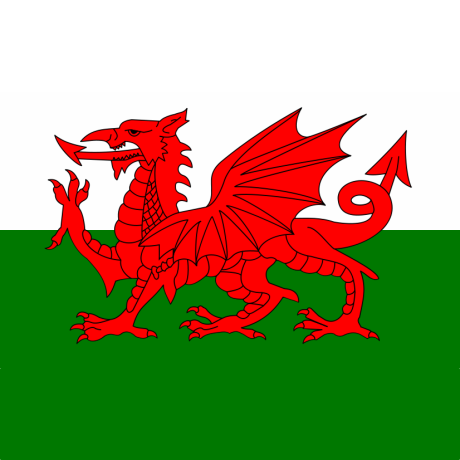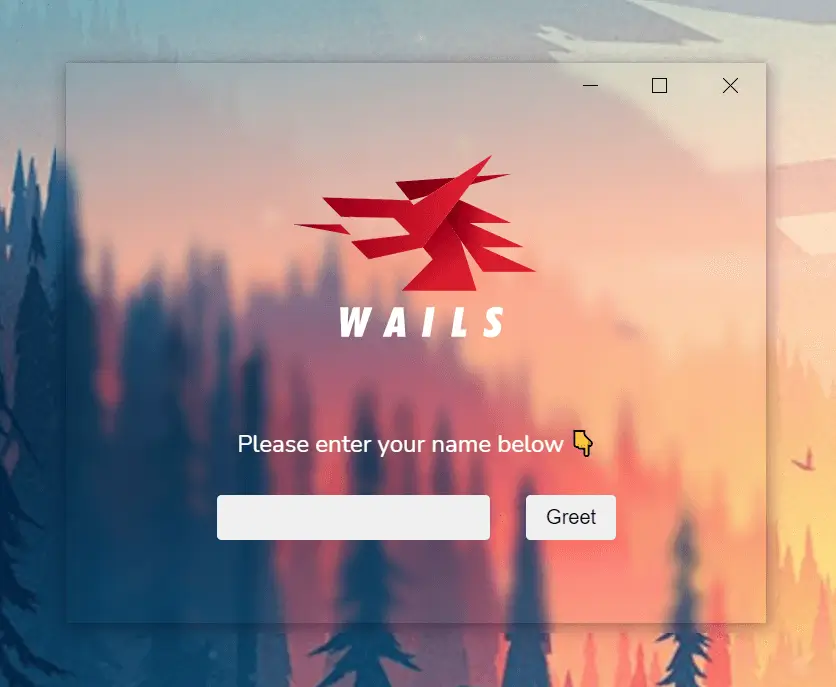
When I first announced Wails on Reddit, just over 2 years ago from a train in Sydney, I did not expect it to get much attention. A few days later, a prolific tech vlogger released a tutorial video, gave it a positive review and from that point on, interest in the project has skyrocketed.
It was clear that people were excited about adding web frontends to their Go projects, and almost immediately pushed the project beyond the proof of concept that I had created. At the time, Wails used the webview project to handle the frontend, and the only option for Windows was the IE11 renderer. Many bug reports were rooted in this limitation: poor JavaScript/CSS support and no dev tools to debug it. This was a frustrating development experience but there wasn't much that could have been done to rectify it.
For a long time, I'd firmly believed that Microsoft would eventually have to sort out their browser situation. The world was moving on, frontend development was booming and IE wasn't cutting it. When Microsoft announced the move to using Chromium as the basis for their new browser direction, I knew it was only a matter of time until Wails could use it, and move the Windows developer experience to the next level.
Today, I am pleased to announce: Wails v2 Beta for Windows! There's a huge amount to unpack in this release, so grab a drink, take a seat and we'll begin...
No CGO Dependency!
No, I'm not joking: No CGO dependency 🤯! The thing about Windows is that, unlike MacOS and Linux, it doesn't come with a default compiler. In addition, CGO requires a mingw compiler and there's a ton of different installation options. Removing the CGO requirement has massively simplified setup, as well as making debugging an awful lot easier. Whilst I have put a fair bit of effort in getting this working, the majority of the credit should go to John Chadwick for not only starting a couple of projects to make this possible, but also being open to someone taking those projects and building on them. Credit also to Tad Vizbaras whose winc project started me down this path.
WebView2 Chromium Renderer
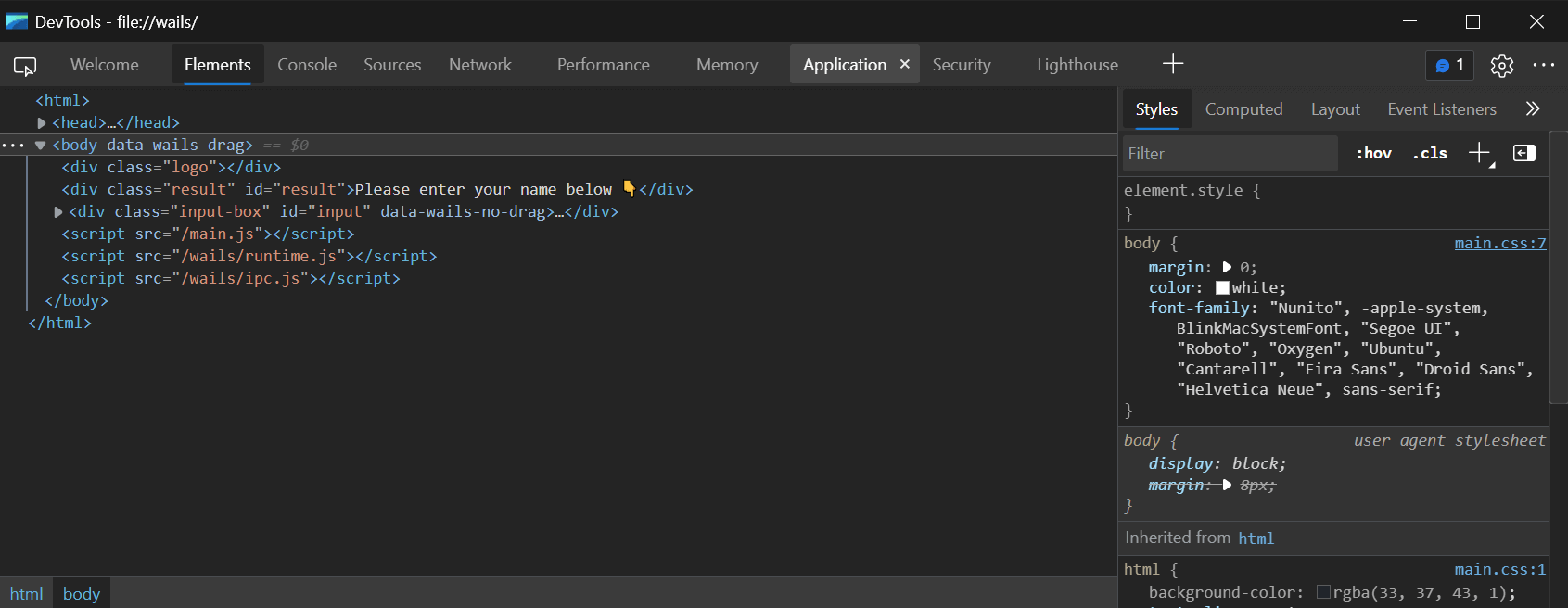
Finally, Windows developers get a first class rendering engine for their applications! Gone are the days of contorting your frontend code to work on Windows. On top of that, you get a first-class developer tools experience!
The WebView2 component does, however, have a requirement to have the WebView2Loader.dll sitting alongside the binary. This makes distribution just that little bit more painful than we gophers are used to. All solutions and libraries (that I know of) that use WebView2 have this dependency.
However, I'm really excited to announce that Wails applications have no such requirement! Thanks to the wizardry of John Chadwick, we are able to bundle this dll inside the binary and get Windows to load it as if it were present on disk.
Gophers rejoice! The single binary dream lives on!
New Features
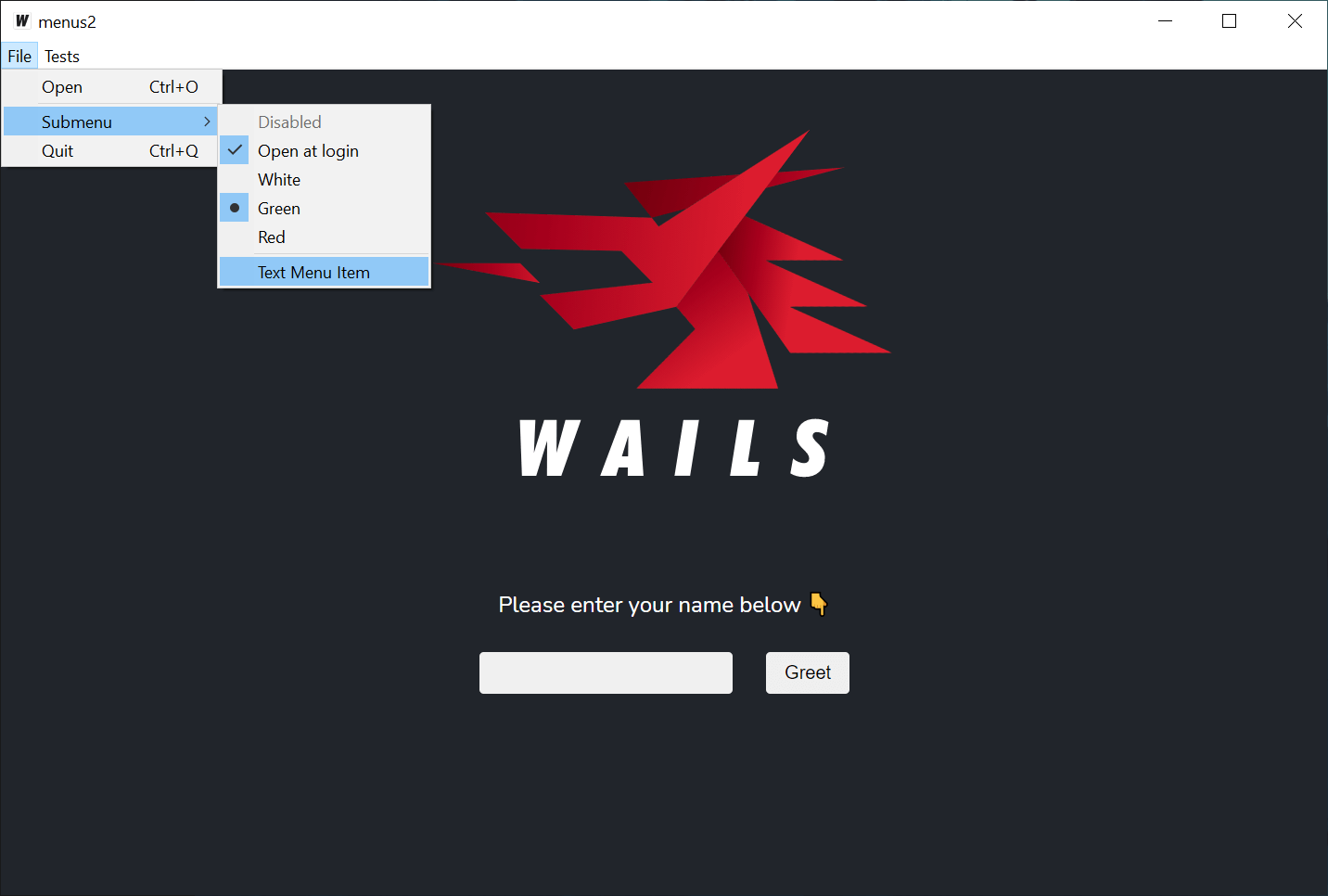
There were a lot of requests for native menu support. Wails has finally got you covered. Application menus are now available and include support for most native menu features. This includes standard menu items, checkboxes, radio groups, submenus and separators.
There were a huge number of requests in v1 for the ability to have greater control of the window itself. I'm happy to announce that there's new runtime APIs specifically for this. It's feature-rich and supports multi-monitor configurations. There is also an improved dialogs API: Now, you can have modern, native dialogs with rich configuration to cater for all your dialog needs.
There is now the option to generate IDE configuration along with your project. This means that if you open your project in a supported IDE, it will already be configured for building and debugging your application. Currently VSCode is supported but we hope to support other IDEs such as Goland soon.
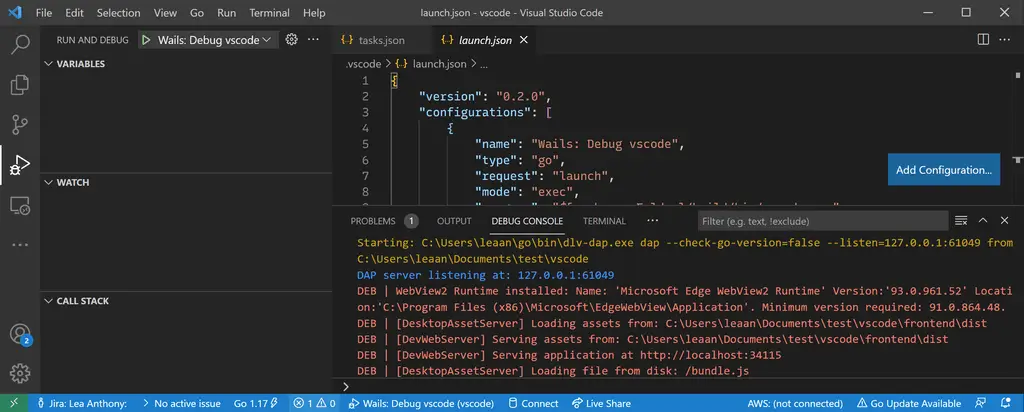
No requirement to bundle assets
A huge pain-point of v1 was the need to condense your entire application down to single JS & CSS files. I'm happy to announce that for v2, there is no requirement to bundle assets, in any way, shape or form. Want to load a local image? Use an <img> tag with a local src path. Want to use a cool font? Copy it in and add the path to it in your CSS.
Wow, that sounds like a webserver...
Yes, it works just like a webserver, except it isn't.
So how do I include my assets?
You just pass a single embed.FS that contains all your assets into your application configuration. They don't even need to be in the top directory - Wails will just work it out for you.
New Development Experience
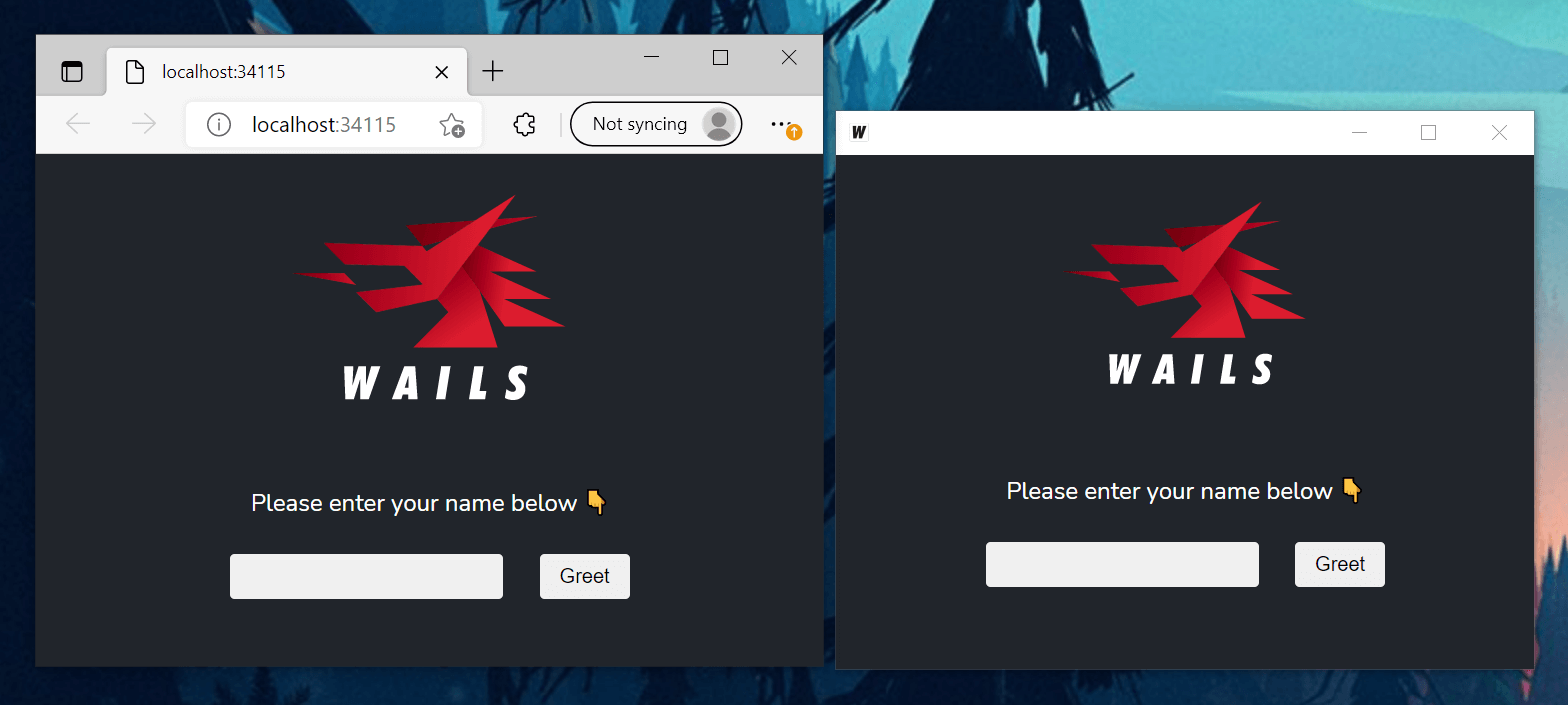
Now that assets don't need to be bundled, it's enabled a whole new development experience. The new wails dev command will build and run your application, but instead of using the assets in the embed.FS, it loads them directly from disk.
It also provides the additional features:
- Hot reload - Any changes to frontend assets will trigger and auto reload of the application frontend
- Auto rebuild - Any changes to your Go code will rebuild and relaunch your application
In addition to this, a webserver will start on port 34115. This will serve your application to any browser that connects to it. All connected web browsers will respond to system events like hot reload on asset change.
In Go, we are used to dealing with structs in our applications. It's often useful to send structs to our frontend and use them as state in our application. In v1, this was a very manual process and a bit of a burden on the developer. I'm happy to announce that in v2, any application run in dev mode will automatically generate TypeScript models for all structs that are input or output parameters to bound methods. This enables seamless interchange of data models between the two worlds.
In addition to this, another JS module is dynamically generated wrapping all your bound methods. This provides JSDoc for your methods, providing code completion and hinting in your IDE. It's really cool when you get data models auto-imported when hitting tab in an auto-generated module wrapping your Go code!
Remote Templates
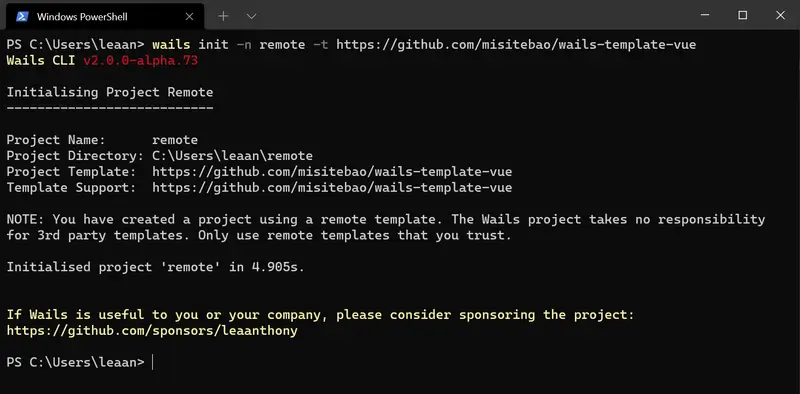
Getting an application up and running quickly was always a key goal for the Wails project. When we launched, we tried to cover a lot of the modern frameworks at the time: react, vue and angular. The world of frontend development is very opinionated, fast moving and hard to keep on top of! As a result, we found our base templates getting out of date pretty quickly and this caused a maintenance headache. It also meant that we didn't have cool modern templates for the latest and greatest tech stacks.
With v2, I wanted to empower the community by giving you the ability to create and host templates yourselves, rather than rely on the Wails project. So now you can create projects using community supported templates! I hope this will inspire developers to create a vibrant ecosystem of project templates. I'm really quite excited about what our developer community can create!
In Conclusion
Wails v2 represents a new foundation for the project. The aim of this release is to get feedback on the new approach, and to iron out any bugs before a full release. Your input would be most welcome. Please direct any feedback to the v2 Beta discussion board.
There were many twists and turns, pivots and u-turns to get to this point. This was due partly to early technical decisions that needed changing, and partly because some core problems we had spent time building workarounds for were fixed upstream: Go’s embed feature is a good example. Fortunately, everything came together at the right time, and today we have the very best solution that we can have. I believe the wait has been worth it - this would not have been possible even 2 months ago.
I also need to give a huge thank you 🙏 to the following people because without them, this release just wouldn't exist:
- Misite Bao - An absolute workhorse on the Chinese translations and an incredible bug finder.
- John Chadwick - His amazing work on go-webview2 and go-winloader have made the Windows version we have today possible.
- Tad Vizbaras - Experimenting with his winc project was the first step down the path to a pure Go Wails.
- Mat Ryer - His support, encouragement and feedback has really helped drive the project forward.
And finally, I'd like to give a special thank you to all the project sponsors, including JetBrains, whose support drive the project in many ways behind the scenes.
I look forward to seeing what people build with Wails in this next exciting phase of the project!
Lea.
PS: MacOS and Linux users need not feel left out - porting to this new foundation is actively under way and most of the hard work has already been done. Hang in there!
PPS: If you or your company find Wails useful, please consider sponsoring the project. Thanks!
